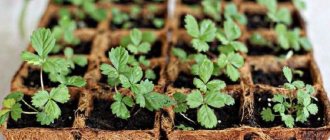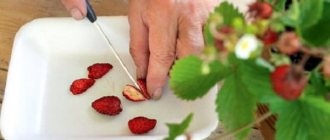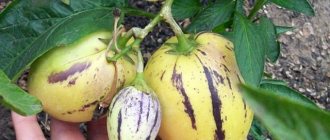To turn your garden into a lush jungle of grape vines, as well as to provide yourself, your loved ones and friends with the delicious fruits of this vine, it is important to carefully understand all the intricacies of growing the crop. To do this, you need to know how to propagate grapes by cuttings in the fall, as well as carefully follow the rules of care and take into account the recommendations of professionals.
Features of cuttings
Since ancient times, propagation of grapes in a home garden or vineyard has been considered a kind of cult. People have always highly valued the amazing properties of the fruits of this culture, creating delicious drinks, tinctures and other valuable products based on them.
When growing grapevines at home, it is not enough to grow one bush. You will need to find a high-quality planting product and propagate the crop in order to enjoy a fresh harvest every year. For this purpose, you can use several grown seedlings purchased at a hardware store, but their cost can be prohibitively high, and maintaining the grade in this way is problematic. A more promising solution is to propagate grapes from cuttings in the fall at home.
First of all, it is necessary to prepare suitable shanks for planting in open ground. For novice gardeners and winegrowers, such an event may seem too complicated, but it is not. The root system of the vine is characterized by particular unpretentiousness, therefore, if the basic rules are followed, it will begin to develop and produce new shoots on both green and mature pieces of the plant. Today, two options for cuttings are practiced:
- spring;
- autumn
The second option is characterized by many advantages, since proper storage and rooting of cuttings will lead to the fact that in the spring the formed plant can be planted directly in open ground. Moreover, the probability that it will take root and begin to form green shoots is almost 100%.
Healthy!
Autumn planting allows you to grow stronger and healthier vines that can withstand the effects of negative temperatures and begin to grow green mass and roots earlier.
Benefits of propagating grapes in autumn
The optimal autumn period for grape propagation is pruning time (October - November, depending on climate conditions). This is best done after the leaves have fallen, often after the first frost. Experienced gardeners claim that autumn cuttings are the most suitable for subsequent cultivation.
- More details about the advantages of autumn reproduction:
- Over the summer, the grapevine has had time to ripen well, and accordingly, the cuttings cut in the fall will be strong and healthy.
- In autumn, cuttings are cut from bushes that have managed to accumulate a sufficient amount of nutrients. This suggests that the seedlings grown from them will quickly take root and have lasting immunity.
- In harsh winters, the eyes and buds of grapes may suffer from low temperatures, and in the spring there will simply be nothing to choose from for quality cuttings.
- A vine covered for the winter may be damaged by mold and fungal infections and will no longer be suitable for subsequent propagation.
- Grapes can suffer mechanical damage in winter, which will also negatively affect the quality of the cuttings.
- Petioles rooted in autumn are more resistant to transportation.
- In the fall, among the market variety, you can purchase cuttings from varieties that you have been looking for for a long time.
- Spring is a busy period. Everything needs to be sowed, dug, planted, fertilized, and you may not have enough time to properly care for the cuttings, so it’s better to do everything well in the fall.
Subtleties of preparing cuttings
In order for the rooting of grape cuttings in the fall to be successful, it is important to correctly approach the procedure for preparing planting raw materials. It is recommended to carry it out no earlier than two weeks before the leaves drop and persistent frosts appear. When selecting cuttings, you should be guided by the following criteria:
- Good planting material is chibuki with a thickness of up to six mm. Shoots with a larger diameter are fattening and are unable to take root.
- For propagation to be successful, it is necessary to use only mature and fruit-bearing cuttings. It is important that they have good hardness and crack slightly when bent.
- The surface of the cutting should be light or dark brown in color. At the cut site, healthy planting material has a green tint. If brown spots are visible, it is most likely sick or dead.
- When performing a visual inspection of the landing chubaks, you need to make sure there are no mechanical damage, signs of disease or other defects.
Advice!
Compliance with the rules will allow you to find the highest quality raw materials for planting, which will be able to develop normally in the next season.
Having made your choice, all that remains is to start cutting, maintaining a length of 30 cm for each specimen. In addition, it is important to make sure that each cutting has 2-4 healthy eyes. When preparing chibouks, you need to be guided by a simple principle: the longer the chosen option, the faster and better it will take root in the new conditions.
Deadlines
The most suitable time for planting grape cuttings for seedlings is in the second half of autumn. At this time, grape stems have a maximum supply of nutrients, which will help them take root faster. For planting, choose a windless, dry morning.
Planting is not carried out in the fall if there have already been frosts and the soil temperature has dropped. Grape seedlings are excellent green planting material, so you should know when to plant them to produce grape seedlings. According to the lunar calendar, the most suitable time for landing is during the waxing moon.
Winter storage rules
It is important for every gardener to know how to propagate grapes from cuttings in the fall and what measures need to be taken so that they can survive the winter. Selected pipes must be stored at temperatures up to +4 degrees Celsius. At the same time, they need to be thoroughly cleaned of remnants of foliage, tendrils and stepsons, as they can trigger premature vegetation processes. Sections of the vine are twisted into a bundle using a soft elastic band or rope, and then they are marked with a tag with the name of the variety.
There are different ways to store cuttings, but the most relevant include the following:
- Keeping planting materials in a cellar or basement. To do this, you do not need to create specific conditions: just dig the cuttings in a bowl of sand and leave them there until the days of February.
- Overwintering cuttings in the garden involves preliminary arrangement of a trench about half a meter deep. The optimal length of such a recess is determined by the length of the cuttings. The bottom of the pit is lined with a 10 cm thick layer of sand. Then, bundles of chibouks are laid on top of the sand, which are sprinkled with the remaining soil, leaves or straw. The last, top layer is covered with plastic film.
- The optimal storage temperature for cuttings is within 3−6 degrees Celsius. An excellent environment for overwintering cut shoots is the refrigerator door. In this case, you won’t have to worry about a stable temperature. Before placing the cuttings in the refrigerator, they must be thoroughly soaked in cold water for two days and then wrapped in plastic. The technique is useful in cases where the amount of planting material is not too large.
Healthy!
Without a doubt, the most convenient way to store grapes is a well-equipped cellar, but not every gardener has such a room at his disposal. A good alternative to a cellar is a refrigerator.
Effective rooting
In order for the propagation of grapes in the fall to be successful, you need to take the right approach to ensuring optimal conditions for rooting. It is advisable to start the procedure in late January - early February. To do this, you will have to remove the planting material from the storage location and then treat it with a manganese solution. Upon completion of the processing measures, the cuttings are additionally kept in liquid for another 1-2 days.
Preparation for the procedure
Before rooting, the cut sites are further refreshed, and then two more fresh cuts are made on each stem. When starting to cut grapes, you need to make sure that the inside of each specimen is painted green, and that at least 2 healthy eyes remain on the cutting itself. Using a thin blade or needle, small indentations should be made at the bottom of the shank, and then treated with “Kornevin”.
Among the available rooting methods, the most popular is the use of sawdust. To implement it, you need to prepare a small container and then place wet sawdust there. Bunches of cuttings are placed in the substrate, after which the container is moved to a heating radiator or any other heating unit. For successful rooting, sawdust needs to be moistened at least once every 5 days. In this case, after 19-21 days, the grape cuttings will sprout small but viable roots.
Making soil
You can also consider the option of rooting the future vine in nutritious soil. Using this method, it is important to make sure that the soil is low acidity. To do this, it is diluted with the following components:
- light peat;
- sand;
- humus;
- fertile substrate.
The last part is poured into a plastic pot or a bottle cut into two parts. Holes are made in the bottom of the container for drainage. The drainage layer itself should consist of pebbles, broken bricks or expanded clay.
Advice!
When planting chibuki in the soil, you need to maintain a slight slope. In this case, at least two buds should remain above the surface of the substrate.
The method of rooting grapes in water is considered the least expensive. To successfully solve this problem, you need to pour a small amount of water into a glass container and then place the planting material there. Successful rooting occurs with the formation of roots. If green leaves appear first, this indicates a certain failure in the growing season.
How to germinate grape stems at home
To germinate roots in grape seedlings after treatment with stimulants, the following actions are necessary:
- Place the cuttings in a transparent container so that the process of root formation can be seen.
- Pour water to the bottom of the container (about 4 cm) and add as the level drops. The vessel must be of sufficient height so that the second eyes on the stems from which the shoots will grow are higher than its edge.
- Add “Heteroauxin” to the first rooting liquid.
- Then the water in the vessel with the jugs must be changed once every 7 days, without adding any more stimulant (you can add activated carbon powder to prevent the water from acidifying).
- Place the vessel with the chibouks on a warm windowsill above the radiator to stimulate rapid root formation.
- For the upper ends of the cuttings, it is necessary to provide cool air to slow down the development of the green parts.
- After the roots have grown by 0.5–2 cm, the cuttings are ready to be planted.
As a rule, buds may first bloom on stems placed in a container for germination, and then roots will appear. Between these events it can take from 2-3 weeks to 1-2 months. It depends on the grape variety and the quality of the seedlings. When the first roots appear on the stems, they can be planted in the soil mixture.
Planting in open ground
Successfully rooted planting material is planted in the soil somewhere in mid-April - early May. During this period of time, the first leaves and roots should appear on it. To successfully plant a plant, you need to follow the instructions:
- First of all, you need to choose a promising place to place the cuttings in the ground. It should be light, warm and nutritious with good soil drainage.
- The selected area of soil is carefully dug up and then diluted with humus, coarse sand and nitroammophos.
- Next, you should form a landing groove with the required depth.
- The seedlings are placed in the soil so that the last eye is located 7-10 cm above ground level.
- The lower elements of the cutting are sprinkled with soil and then compacted.
- After successfully planting seedlings in the ground, they need to be thoroughly watered and the soil treated with mulch.
By following the basic rules for storing, rooting and moving planting material into the soil, you can achieve high efficiency in growing grapes using cuttings. In this case, within a few months in the fall, the chibouks will form full-fledged seedlings with good rhizomes.
Healthy!
After a successful winter in open ground, they will begin to grow green mass and then form fruit berries.
Further care
Although both planting methods are quite effective, to successfully grow grape seedlings, they require further care:
- Keep in good lighting . To do this, you need to place containers with pipes on a warm windowsill on the south side. You can add additional lighting using a phytolamp.
- Water systematically once every 7 days, pouring a small amount (100 ml) of warm water onto each seedling. Abundant watering is carried out only if the room temperature rises to +15°C and above. In a cold room, water the vine once every 2-3 weeks. Rare spraying of foliage is acceptable.
- The cuttings are transplanted into open ground only after they have formed a good root system and when the first full-fledged foliage has grown.
- Grape seedlings are planted on the site in early May to a depth of 30 cm , in a previously prepared and fertilized planting hole (80 x 80 cm), maintaining a distance of 1.5 m between the bushes, and provide timely watering and fertilizing.
Did you know? In ancient times, the profession of a winegrower was considered one of the most dangerous, since in those days trees were supports for vines. The trunks often dried out under the weight of the bushes and often broke, unable to withstand a person who could fall and break.
As you can see, growing grapes at home using cuttings is not a complicated procedure even for a novice winegrower. The main condition that any gardener needs to remember is careful adherence to the technologies of all stages of crop cultivation, including the preparation of planting material, its preservation, germination and planting.
Direct planting
The method of propagating a grapevine through cuttings can be labor-intensive and painstaking. It involves the preliminary preparation of suitable cuttings and their proper storage during the winter season. In addition, the gardener needs to spend a lot of time rooting the crop several weeks before spring warming.
Naturally, the efforts spent are justified by good yields and the yield of an impressive number of healthy seedlings. But you can find a simpler solution, which is to plant seedlings directly into the soil. To carry out direct planting of cuttings in the ground, you need to perform the following steps:
- Prepare healthy planting specimens and make oblique cuts on their tops.
- The cutting is placed in a suitable recess (the optimal depth is 50−60 cm).
- When burying the cutting in soil, you need to make sure that one eye is visible above the soil surface.
- Next you need to dig in the planting material with fertile soil, compact it and water it. Before the onset of frost, the cuttings are thoroughly watered.
- Just before winter, the grapes are covered with spruce branches, straw, burlap or dry leaves.
- At the beginning of spring, the insulating layer is removed. It remains to wait for the first green leaves to form.
Important!
A significant drawback of the method is the low survival rate of seedlings. Of the total number of cuttings planted in the spring, only 60-70% wake up.
Such low rates force gardeners to use a little trick: 2 cuttings are placed in each hole. In this case, the likelihood of survival will be higher. If two planting materials take root at once, the weaker version will need to be removed.
Another simple option for growing grapes is to use layering. In any case, propagating vines using cuttings in the fall is the most relevant solution, which is characterized by a lot of advantages and features. If you follow the rules and follow the instructions, the growing process will be productive and the young vine will be fertile.











